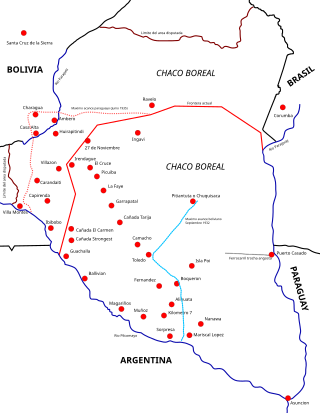
The Chaco War was fought from 1932 to 1935 between Bolivia and Paraguay, over the control of the northern part of the Gran Chaco region of South America, which was thought to be rich in oil. The war is also referred to as La Guerra de la Sed in literary circles since it was fought in the semi-arid Chaco. The bloodiest interstate military conflict fought in South America in the 20th century, it was fought between two of its poorest countries, both of which had lost territory to neighbours in 19th-century wars.
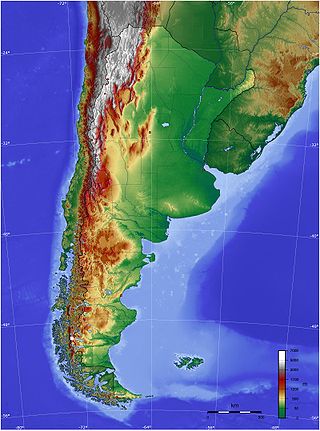
The geography of Argentina is heavily diverse, consisting of the Andes Mountains, pampas, and various rivers and lakes. Bordered by the Andes in the west and the South Atlantic Ocean to the east, its neighbouring countries are Chile to the west, Bolivia and Paraguay to the north, and Brazil and Uruguay to the northeast.

The Gran Chaco or Dry Chaco is a sparsely populated, hot and semiarid lowland natural region of the Río de la Plata basin, divided among eastern Bolivia, western Paraguay, northern Argentina, and a portion of the Brazilian states of Mato Grosso and Mato Grosso do Sul, where it is connected with the Pantanal region. This land is sometimes called the Chaco Plain.
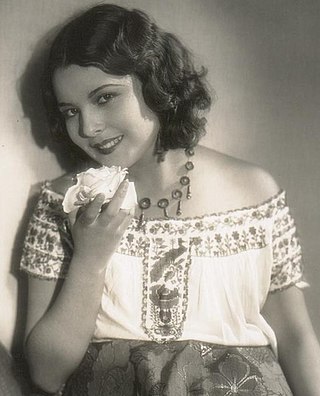
Guadalupe Natalia Tovar Sullivan, known professionally as Lupita Tovar, was a Mexican-American actress best known for her starring role in the 1931 Spanish-language version of Drácula, filmed in Los Angeles by Universal Pictures at night using the same sets as the Bela Lugosi version, but with a different cast and director. She also starred in the 1932 film Santa, one of the first Mexican sound films, and one of the first commercial Spanish-language sound films. At the time of her death, she was the oldest living actress and one of the last surviving stars from the Golden Age of Mexican cinema and from the Golden Age of Hollywood.

Antonio Garrido Monteagudo, better known as Antonio Moreno or Tony Moreno, was a Spanish-born American actor and film director of the silent film era and through the 1950s.

Enrique Peñaranda del Castillo was a Bolivian general who served as the 38th president of Bolivia from 1940 until his overthrow in 1943. He previously served as commander-in-chief of the country's armed forces during the second half of the Chaco War (1932–1935).

Aeroposta Argentina S.A. was an early pioneering airline in Argentina established in the late 1920s, and a subsidiary of the French airmail carrier Aéropostale. It was created on September 5, 1927, as a subsidiary of the Aéropostale. In 1929, Aéropostale started expanding its airmail service within South America, and provided the first domestic air services on routes to Asuncion, Paraguay, Santiago de Chile, plus Bahía Blanca, Comodoro Rivadavia and Rio Gallegos in southern Argentina.

The cinema of Paraguay has historically been small. However, this has begun to change in recent years with films like El Toque del Oboe (1998); María Escobar (2002); O Amigo Dunor (2005), which competed for Best Movie in the Rotterdam International Film Festival; Hamaca Paraguaya (2006), which was screened at the Cannes Film Festival, gaining critical acclaim both in Paraguay and abroad; 7 cajas (2012); Latas Vacías (2014); and Luna de Cigarras (2014).

George J. Lewis was a Mexican-born actor who appeared in many films and eventually TV series from the 1920s through the 1960s, usually specializing in westerns. He is probably best known for playing Don Alejandro de la Vega, who was Don Diego de la Vega's father in the 1950s Disney television series Zorro. Lewis co-starred in Zorro's Black Whip and had a minor role in Ghost of Zorro before starring as Don Alejandro in the Disney series.
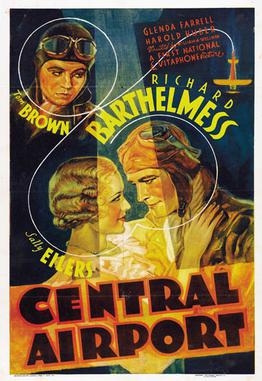
Central Airport is a 1933 American pre-Code aviation drama film directed by William A. Wellman, based on the John C. "Jack" Moffitt story, "Hawk's Mate". The film stars Richard Barthelmess and Sally Eilers. Central Airport was produced and released by Warner Bros., on April 15, 1933. John Wayne had an uncredited part in the film, playing a co-pilot, and this film features his first on-screen death.

The climate of Argentina varies from region to region, as the vast size of the country and wide variation in altitude make for a wide range of climate types. Summers are the warmest and wettest season in most of Argentina except in most of Patagonia where it is the driest season. Warm in the north, cool in the center and cold in the southern parts experiencing frequent frost and snow. Because southern parts of the country are moderated by the surrounding oceans, the cold is less intense and prolonged than areas at similar latitudes in the northern hemisphere. Spring and autumn are transition seasons that generally feature mild weather.
The Gran Chaco is a plain of about 1.000.000 km2. It covers parts of Bolivia, Paraguay, Brazil and Argentina.
The Chaco War was the first major Latin American conflict in which aircraft were used. This aerial war carried a large human and materiel cost. At that time, Bolivia possessed one of the greatest aerial forces in the region, however this fact did not prevent its final defeat. Bolivia lacked the expertise to utilise its aerial forces, and was thus unable to maximise its use of military aviation. Paraguay had a small number of pilots and technicians, all veterans of the revolution of 1922. The 1922 revolution was a brief civil war in which the government and the rebels used aircraft in the operations, and José Félix Estigarribia could be considered an innovator in the military use of aircraft on the continent.

Barry Norton was an Argentine-American actor. He appeared in over 90 films, starting in silent films from 1925 until his death in 1956. He is perhaps best known for his role as Juan Harker in Universal Pictures' Spanish-language version of Drácula in 1931, the English language role of Jonathan Harker originated by David Manners.

The Breese-Dallas Model 1 or Breese model X was a prototype single engine airliner that rapidly changed hands throughout the 1930s. It was also known as the Michigan Aircraft Company Model 1, and the Lambert Model 1344.
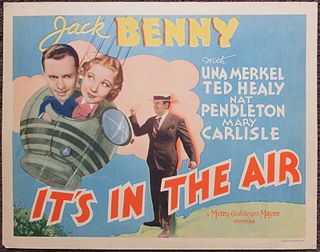
It's in the Air is a 1935 American comedy film directed by Charles Reisner and written by Byron Morgan and Lew Lipton. The film stars Jack Benny in his final film for MGM, Ted Healy, Una Merkel, Nat Pendleton, Mary Carlisle and Grant Mitchell. It's in the Air was released on October 11, 1935, by Metro-Goldwyn-Mayer.

Flight Into Nowhere is a 1938 American adventure film directed by Lewis D. Collins, and produced by Larry Darmour for Columbia Pictures. The film stars Jack Holt, Jacqueline Wells and Dick Purcell. In the low-budget action film, the locale of South America jungles provides an exciting venue for "flyboy" Jack Holt, who is trying to establish a new route for an American airline.
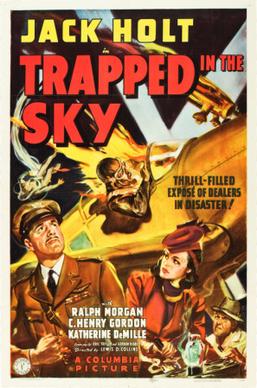
Trapped in the Sky is a 1939 American thriller film directed by Lewis D. Collins and produced by Larry Darmour for Columbia Pictures. The film stars Jack Holt, Ralph Morgan and Katherine DeMille. Holt is the "flyboy" who is trying to find the saboteurs of a "silent" aircraft. The plot device of a "noiseless" or stealthy aircraft is a familiar theme in aviation films of the period, including The Sky Ranger (1921), The Silent Flier (1926) and Eagle of the Night (1928).

The Colegio del Uruguay is an Argentine educational institution, created by then Governor of Entre Ríos Justo José de Urquiza in the 28th of July of 1849. It was the first in the country to be secular and free. Nowadays, it serves circa 1200 students.

















